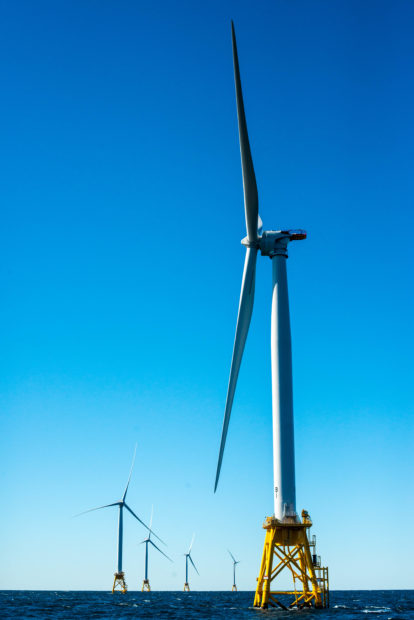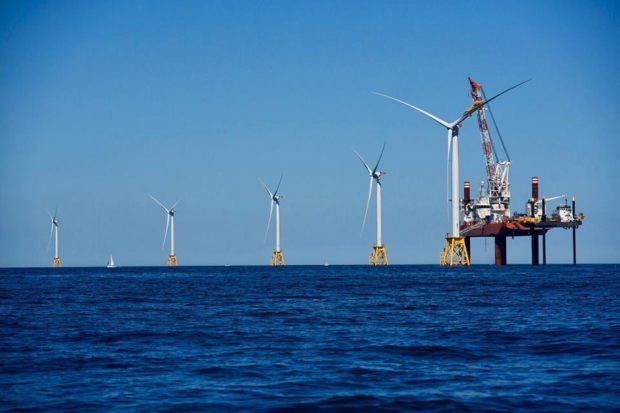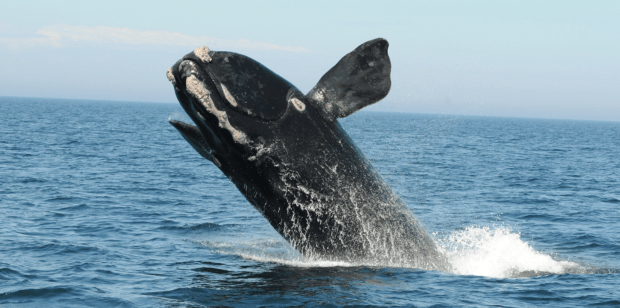We have much more to do and your continued support is needed now more than ever.
Offshore Wind Power Victories Demonstrate Clean Energy Pathway Protects People and Wildlife

The time for talk is over. The climate and wildlife crisis is getting worse every day (more floods, more polar ice caps melting, a million species at risk–the stories go on and on).
We need solutions now at the scale of the problem we are trying to solve. In short, the math has to add up: To get to 50 percent clean energy by 2030, and then to 100 percent clean energy by 2050, we need to make dramatic progress in the next few years.
Recognizing how our country’s dependence on fossil fuel has devastating impacts on people and wildlife, the National Wildlife Federation launched our campaign for responsible offshore wind power almost ten years ago. I clearly remember how many people told me that offshore wind power would never come to the United States (despite its success in Europe going back to the early 1990s). A small group of committed individuals, companies, and organizations recognized that offshore wind, especially in the Northeast, was the difference-maker we needed to see a full-scale clean energy transformation. We needed all the solar and energy efficiency programs we could muster, but we also needed to build projects at the same scale as coal- and oil-fired power plants that we wanted to close or retire. Offshore wind projects require the cooperation of a large number of companies and labor sectors, such as steelworkers, construction and building trades, and other unions that are a powerful voice for a clean energy revolution.

So the Federation got to work. We researched and wrote three comprehensive reports, submitted tens of thousands of public comments to federal and state agencies, organized dozens of press conferences, and turned out local residents to countless hearings – including many National Wildlife Federation members. We partnered every step of the way with a wide range of local citizens, saltwater anglers, and faith leaders, along with labor, business, and environmental justice organizations. And we have established and maintained a very active dialogue with all offshore wind developers, state agencies, and federal regulators about the importance of ensuring high standards of protection for marine wildlife as we explore and develop offshore wind energy in the Atlantic.
I am so proud to report that today, seven states have made commitments to build enough offshore wind energy to power 10 million homes (20,000 megawatts). A bipartisan set of governors have made this possible, including Governors Charlie Baker (R- Massachusetts) and Larry Hogan (R-Maryland) who have recently doubled and tripled their offshore wind purchase commitments respectively.
State Progress on a National Scale
June 7, 2019 – Connecticut Governor signed legislation making an offshore wind commitment that is the equivalent of powering over 1 million homes.
June 20, 2019 – New York Governor Andrew Cuomo and the Legislature reached a historic climate deal with an offshore wind power mandate that is the equivalent of powering nearly 5 million homes. And New York selected two developers to build the Empire State’s first two large-scale projects, to power a combined total of nearly 1 million homes.
June 21, 2019 – New Jersey selected its first, and the nation’s largest individual, offshore wind project that will be capable of powering approximately 500,000 homes (Ørsted’s Ocean Wind project).
In sum, we are witnessing an historic clean energy transformation. The most exciting part of this campaign right now is moving from critical state policy commitments to actual awarded contracts that are needed to finally move specific projects forward.

In New Jersey, this is personal. I had the unique honor of serving as the Deputy Transition Policy Director for Governor Murphy. This role was a temporary assignment, lasting only a few months between his election and the inauguration, but it was a great way to serve the State at a pivotal moment in its energy story. In particular, I worked with an incredible, diverse cross-section of New Jersey to draft recommendations for the Environment and Energy Committee. The committee recommended that the state prioritize offshore wind procurement, resulting in the Governor issuing an ambitious Executive Order and now, just a year and a half after taking office, making the largest offshore wind contract commitments in the country.
Responsible Development for Wildlife
While securing these commitments and projects is a critical part of our campaign, the National Wildlife Federation has made clear since the beginning that we only support responsible offshore wind development. That means we must research and identify the best locations for offshore wind projects, far off our shores outside the sensitive coastal zone that is so important for birds and other marine life. Project proposals must include comprehensive plans for minimizing impacts to wildlife and other resources within their project area, especially for marine mammals which require extra protections. On this front, the National Wildlife Federation recently signed an agreement with the soon-to-be-largest offshore wind project in Massachusetts to protect the endangered North Atlantic right whale. We also believe that additional research and monitoring is required to ensure these projects meet our expectations and that we learn critical information about how to further minimize impacts from offshore wind energy development on the ocean.

Two recent developments demonstrate we are on the right track. At the end of 2018, New Jersey rejected an application to build three offshore wind turbines within three miles of New Jersey’s coastline. The National Wildlife Federation and our New Jersey affiliate, New Jersey Audubon, devoted substantial resources to this effort because the project was proposed in an important bird flyway and not far from an area known to be utilized by the threatened Red Knot. Following this decision, New Jersey continued to demonstrate its commitment to environmental protection by stating that one of the key reasons it picked Ørsted’s Ocean Wind project over its two other strong competitors was the strength and scope of the project’s plan to minimize impacts to coastal and marine wildlife.
With the urgency of the climate and wildlife crisis growing every day, the importance of our offshore wind campaign has never been more clear.
We would be so grateful if you can take a moment right now to tweet a thank you to these leading governors in Massachusetts, Connecticut, New York, and New Jersey. Simply click the button below for your state to tweet to your governor.
Connecticut
Massachusetts
New Jersey
New York
Do you live in another Atlantic Coast state? Let your Governor know that you want them to take action for offshore wind power!





















